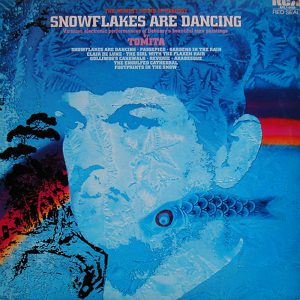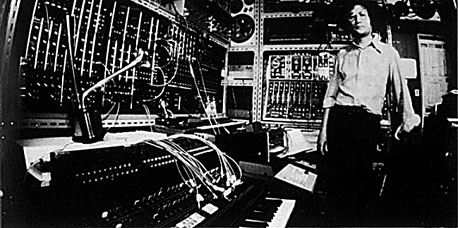Isao Tomita Switches Off
Isao Tomita 1932-2016
When Isao Tomita first emerged, we looked at him as Japan’s answer to Wendy Carlos. The truth is, hearing Carlos’ Switched-On Bach got him into synthesizers in the first place. But while Carlos went Baroque, Tomita choose 20th century composers to interpret like Ravel, Holst and on his second album, Snowflakes Are Dancing, Claude Debussy.
Tomita took a lot of liberties with his source material, altering timbres and interjecting space music effects. His freewheeling interpretations could get him in trouble. His 1976 rendition of Gustav Holst’s “The Planets” prompted the Holst estate to sue him and tried preventing the release. They didn’t succeed.
Tomita’s music, especially early on, was resolutely electronic. He wasn’t trying to imitate orchestral sounds. “I’ve always been interested in the effect of sound itself rather than music,” he claimed in a 1992 interview on Echoes.
 When I walked into Tomita’s narrow studio in 1992, it was like walking through a time tunnel of electronic music history. We literally clambered over ancient reel-to-reel tape machines, discarded electronic modules, and along one wall, his original Moog synthesizer, the engine of all those early albums. Moving deeper in were the latest digital synthesizers and processors peeking out of the jumble. Just to reach his work station, Tomita had to step over a piano bench piled with electronic gear.
When I walked into Tomita’s narrow studio in 1992, it was like walking through a time tunnel of electronic music history. We literally clambered over ancient reel-to-reel tape machines, discarded electronic modules, and along one wall, his original Moog synthesizer, the engine of all those early albums. Moving deeper in were the latest digital synthesizers and processors peeking out of the jumble. Just to reach his work station, Tomita had to step over a piano bench piled with electronic gear.
He was especially proud of a picture of him with Michael Jackson taken in this very same studio. But Tomita only dabbled in pop sounds, preferring the vastness of space via composers from a slightly earlier time.
“Space to me is something vast and endless,” he said. “When I was a child I looked through a telescope at the stars and the moon. I’m just fascinated by the vastness of the space itself.”
Now he travels the spaceways. Isao Tomita left the planet on May 5 at the age of 84. We remember him tonight on Echoes.

